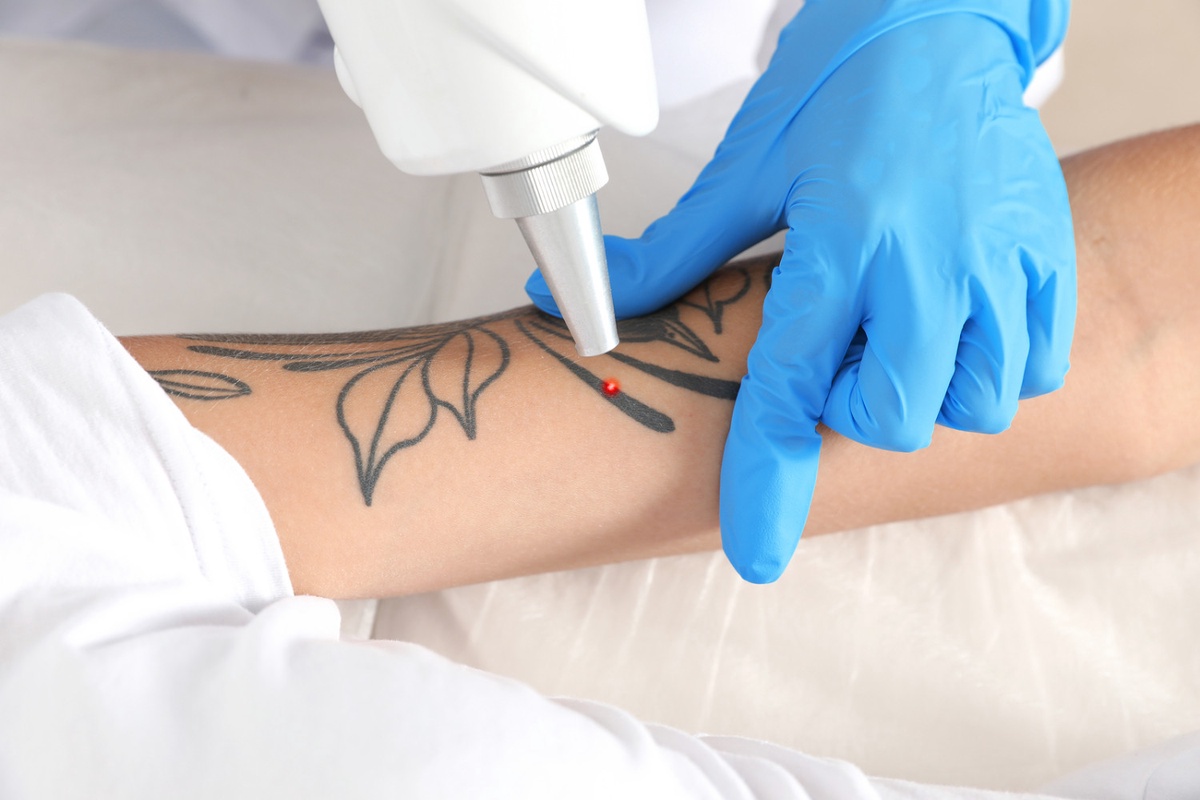Introduction:
Tattoos are a popular form of body art, but they are not always meant to be permanent. Many individuals may find themselves regretting a tattoo they once loved. Fortunately, advancements in technology have led to the development of laser tattoo removal procedures. In this blog post, we will explore the laser tattoo removal procedure, its benefits, and the associated risks.
- Understanding Laser Tattoo Removal: Laser tattoo removal is a non-invasive procedure that uses laser technology to break down the tattoo ink particles in the skin. The laser emits high-intensity light pulses that target the pigment in the tattoo, gradually fading it away.
- The Laser Tattoo Removal Procedure:
- a. Consultation: Before the procedure, you will have a consultation with a dermatologist or a trained professional. They will assess your tattoo, discuss your goals, and evaluate your skin type to determine the best approach for the removal process.
b. Preparing for the Procedure: On the day of the treatment, the tattooed area will be cleaned and a topical anesthetic may be applied to minimize discomfort. Protective eyewear will also be provided to shield your eyes from the laser light.
c. Laser Treatment: The laser will be directed at the tattooed area, emitting pulses of light that target the ink pigments. The laser energy breaks down the ink particles into smaller fragments, which are gradually eliminated by the body’s immune system.
d. Post-Treatment Care: After the procedure, you will be given instructions on how to care for the treated area. This typically involves applying antibiotic ointment, keeping the area clean, and avoiding direct sunlight. - Benefits of Laser Tattoo Removal:
a. Effective Removal: Laser tattoo removal is considered one of the most effective methods for eliminating tattoos. The treatment can significantly fade or completely remove the tattoo, depending on factors such as ink color, depth, and size.
b. Non-Invasive and Safe: Unlike surgical tattoo removal procedures, laser tattoo removal is non-invasive, meaning there is no cutting or stitching involved. It is generally safe when performed by a qualified professional, with minimal risk of scarring.
c. Customizable and Versatile: Laser tattoo removal can be tailored to suit individual needs. The laser technology allows for precise targeting, making it suitable for tattoos of various sizes, colors, and locations on the body. - Risks and Considerations:
a. Pain and Discomfort: While topical anesthetics can help minimize discomfort, some individuals may still experience mild pain during the procedure. The sensation is often described as similar to a rubber band snapping against the skin.
b. Skin Reactions: Laser tattoo removal may cause temporary side effects such as redness, swelling, blistering, or scabbing. These reactions usually subside within a few weeks, but there is a small risk of permanent scarring or skin texture changes.
c. Multiple Sessions: Complete tattoo removal usually requires multiple treatment sessions, spaced several weeks apart. The number of sessions depends on various factors, including the tattoo’s size, color, age, and the individual’s skin type.
Conclusion: Laser tattoo removal offers a safe and effective solution for those seeking to remove unwanted tattoos. While it has numerous benefits, it is essential to consider the potential risks and consult with a qualified professional. If you are considering laser tattoo removal, reach out to a dermatologist or a certified laser specialist who can guide you through the process and help you achieve the desired results.


No comments yet